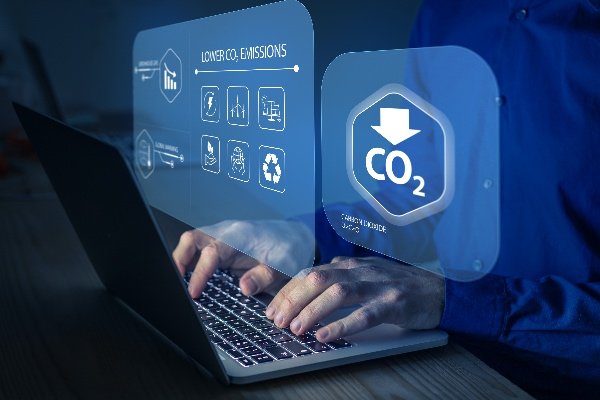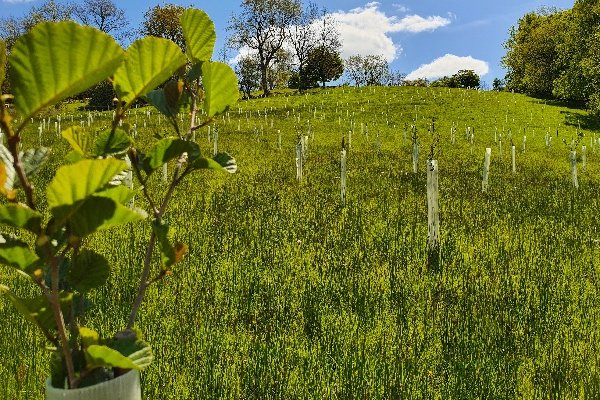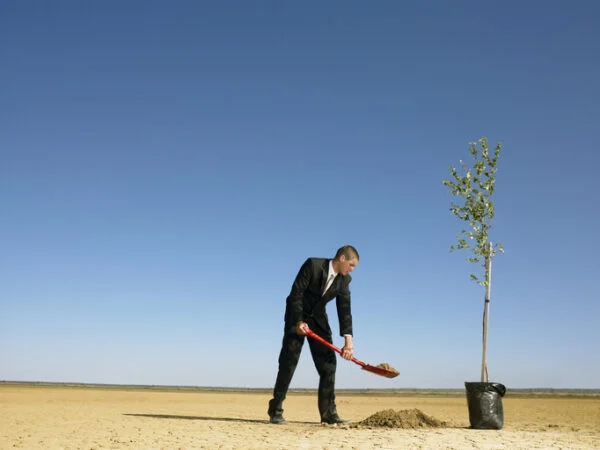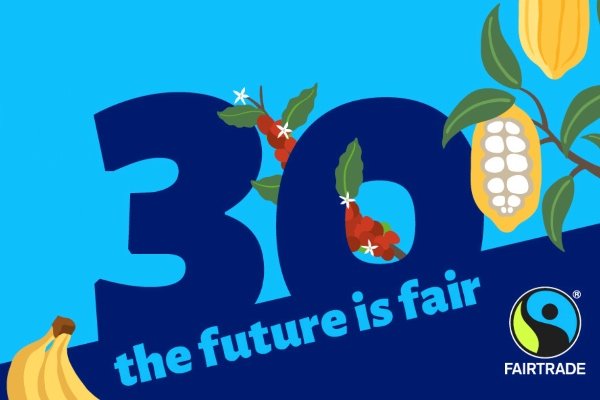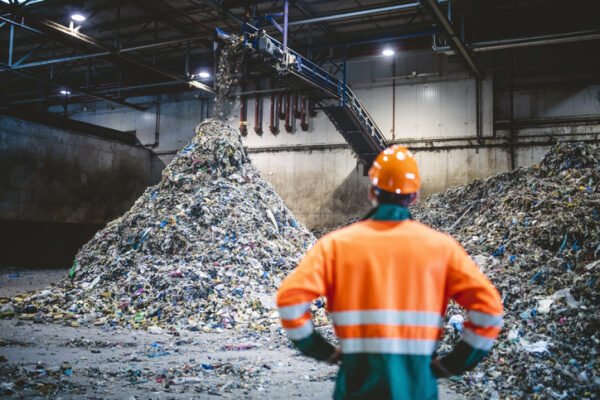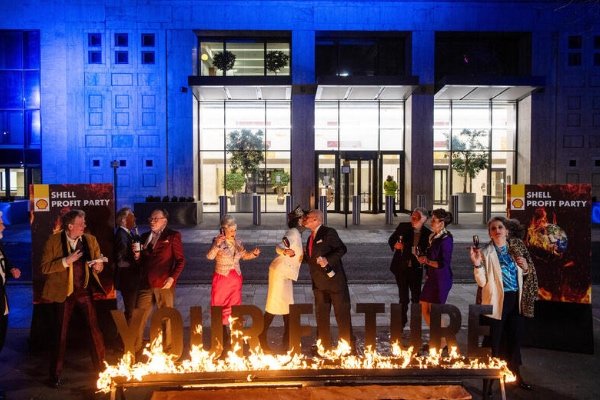‘The effective use of digital technology is a core capability at the heart of the defence and we are seeing an exponential rise in our ability to manage and exploit data in all parts of our military and business operations. This means we are continually upgrading and modernising our technology base and we are increasingly doing this in a way that is sensitive to our carbon footprint. For example, during the pandemic we have expanded our remote working capability enabling defence personnel to work safely and productively from home and helped to reduce emissions from travel; we estimate we have saved 3.5m kg CO2 emissions per month, the equivalent of charging half a billion smartphones.’
GENERAL TOM COPINGER-SYMES
Director of military digitisation, Ministry of Defence
Solutions for business
What if there were solutions that didn’t just focus on the wellbeing of the employee, but also began to look at strategies and solutions that can mitigate climate change?
In his PhD research, Justin Sutton-Parker of Citrix has outlined four strategies that organisations can adopt to help reduce their annual global greenhouse emissions to a level that would be equal to planting 67 million acres of forest.
These solutions allow organisations to enable the use of low-energy devices, reduce employee commuting by enabling remote working, reduce global greenhouse emissions from data centres by moving to the cloud and extend the lifecycle of electronic devices.
While organisations can procure low-energy devices such as Chrome books, users can launch virtual desktop solutions with the same look and feel of a locally installed desktop. Selecting a vendor that offers cloud choice, holistic security and digital workspace allows organisations to encourage the use of low-energy devices without risking security or employee experience.
End-user devices contribute to 35% of I.T.’s total global greenhouse emissions, of which 80% are created during the end-use phase. This is due to the electricity consumed during the device’s lifetime. Allowing the selection of devices with low total energy consumption is vital to lowering organisational carbon footprints and achieving sustainability goals.
To help an organisation enable low-energy devices, Citrix offers solutions such as virtual apps and desktops, providing high performance irrespective of the endpoint device. This means low-energy devices can be selected regardless of their operating system, and organisations can reduce end-user computing device emissions by 90% annually.
Flexible workstyles
Remote work is a critical part of sustainability; transportation is responsible for 14% of annual global greenhouse gas emissions, with cars contributing 72% of this total.
Commuting is at the heart of the transport pollution issue. By reducing the frequency of employees’ commutes, greenhouse gas emissions could be reduced by 40%.
Adopting a truly flexible workstyle policy would enable employees to work from home, or walk or cycle to an alternative local environment, such as a coffee shop. This flexibility without restriction empowers organisations to create a truly sustainable workstyle policy designed to reduce employee commuting and lower environmental impact. As well as helping to reduce the impact on the environment, this approach could bring huge benefits to employees’ work-life balance.
Carbon Trust reports that 66% of people feel positive about an organisation that can demonstrate it is reducing its carbon footprint. Organisations can improve engagement by enabling employees to choose the device that suits their environmental values. Enabling free device choice and flexible or remote working also improves employee retention by improving their experience and work-life balance.
Data centres
Reducing data centre emissions and moving to cloud services is one way an organisation can reduce its carbon footprint. 3% of global electricity is consumed by the world’s 8 million data centres, which produce over 290m tCO2e emissions annually. Adopting data centre solutions with zero carbon impact is an essential element of achieving sustainability.
Citrix technologies transform how people work, and represent the future of work. The combination of Citrix workspace, networking and analytics allows employees to work securely and effectively from any location.
Citrix offers cloud services that simplify the delivery and management of Citrix technologies, enabling the extension of existing on-premises locations or moving 100% to the cloud.
Reducing e-waste
Lastly, extending the device lifecycle can reduce electronic waste and allow an organisation to create a truly sustainable model in I.T.
50 million tonnes of electronic waste (‘e-waste’) are produced annually, yet only 20% is recycled through formal channels. Extending the lifespan of a device tackles the issue of e-waste by spreading the environmental impact across five years (instead of three years), as procurement, recycling and re-purposing processes are ‘pushed out’ by two years.
Through virtualisation, devices can enjoy a longer useful lifespan as they continue to offer the user a great experience and help create truly sustainable procurement policies.
Sustainable business
I.T. can play a major role in enabling organisations to become more sustainable through solutions such as the use of low end-point devices, remote work policies, moving to the cloud and extending the lifecycle of our devices.
This will help to improve not only the future of how people work but also the wellbeing of our planet.
Innovation at work
Imagine what the world could look like by 2050 if we tap into technologies that enable sustainable strategies. Imagine what the world could look like if we made lifestyle changes that focused on the wellbeing of the planet. Imagine how revolutionary we can be as we shift what work looks like – what a work-life balance looks like.
Imagine creating truly circular economies, allowing not just nature but also humanity to thrive. Imagine being able to work in green spaces, no longer sitting in rush hour for two to three hours.
Imagine being able to step into your garden during the day. Imagine breaking early in the day to go for a swim in waters that are clear and clean, or if you’re in the city being able to breathe in clean air and sift through urban sounds without the constant distraction of vehicle horns.
Imagine what 2050 would look like if we make sustainability a top priority in all that we do.
The future of our existence relies on our need to be innovative and flexible. This year taught us all to pause and focus on what truly matters.
 Play Video about This Rock Might Just Save The World
Play Video about This Rock Might Just Save The World Play Video about Play 2 hours of rock
Play Video about Play 2 hours of rock Play Video about Play 2 hours of brook
Play Video about Play 2 hours of brook Play Video about Play 2 hours of sheep
Play Video about Play 2 hours of sheep






























